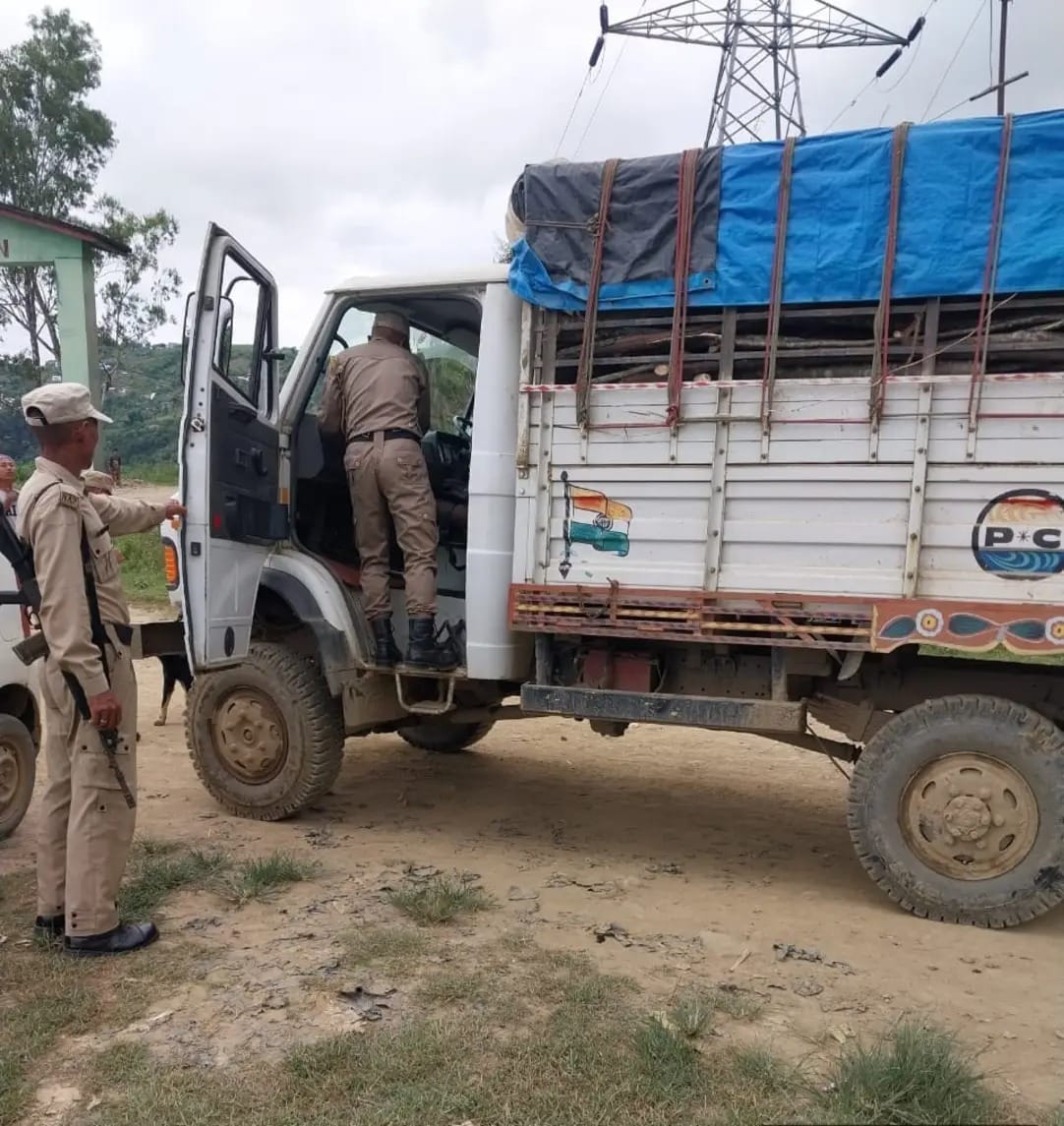FRIDAY, DECEMBER 05, 2025
- Home
- Promises vs. Reality: Inside Nagaland’s war on drugs
Promises vs. Reality: Inside Nagaland’s war on drugs
Eastern Mirror’s 2-part series explore the reality behind Nagaland's ‘War on Drugs’ and the challenges in combating substance abuse.
Share

Idaizeule Lungalang
KOHIMA — Nagaland government’s ‘War on Drugs’ continues its push to combat the threat of substance abuse and trafficking across the state. The campaign gained renewed focus during the 77th Independence Day celebrations in 2023, when Chief Minister Neiphiu Rio administered a public pledge for a ‘Drug-Free Nagaland’.Nagaland travel guide
While the pledge marked a symbolic commitment to tackling the drug crisis, nearly a year later, questions remain about the practical implementation and effectiveness of the campaign. In this context, Eastern Mirror—as part of this two-part series—spoke to law enforcement officials, rehabilitation experts, and faith-based groups to understand the ground reality.
In an exclusive interview, Director General of Police (DGP) Rupin Sharma outlined the progress made since the CM’s pledge. He noted a significant improvement in the performance of the Police Department but expressed concern that this enthusiasm is not reflected across all government departments or society at large.
Also read: Centre urges states to crack down on fake and substandard fertilisers
While the police have received anonymous tips from the public, the DGP noted a general reluctance among citizens to report drug-related activities to authorities. Instead, many NGOs, civil society groups, and churches are taking matters into their own hands, often without involving law enforcement, he said.
As a result, offenders often escape with minimal consequences, undermining the rule of law.
From August 2024 to June 2025, Nagaland Police registered 160 cases under the Narcotic Drugs and Psychotropic Substances (NDPS) Act, arresting 273 individuals—228 men and 45 women.
Seizures included 480.5 kg of ganja, 27.3 kg of opium, 13.7 kg of heroin, 7.5 kg of brown sugar, 56979 yaba tablets, 5666.5 bottles of cough syrup, 96390 other synthetic drugs.
The total value of seized contraband amounted to INR 81.5 crore.
Nagaland Police have been collaborating with counterparts in Assam, Meghalaya, Manipur, West Bengal, Punjab, Uttar Pradesh, and Karnataka to crack down on drug syndicates. The Narcotics Police Station at PHQ, Kohima, has played a key role in information-sharing and tracking traffickers, he said.Nagaland travel guide
Infra and policy shortfalls
Sharma identified two major barriers: lack of public cooperation and inadequate de-addiction infrastructure. ‘Despite having sufficient resources, we struggle to gather intelligence due to public hesitation,’ he said.
The shortage of rehabilitation centres and Opioid Substitution Therapy (OST) facilities is also hampering recovery efforts, making it difficult for individuals seeking help to access services.
Moreover, the existing Nagaland State Substance Abuse Prevention and Treatment Policy is “slightly old” and needs urgent revision, he said.
The DGP pointed out that while existing resources may be sufficient to handle a smaller number of offenders, a sudden increase would quickly overwhelm the current infrastructure. He highlighted that without revising policies and expanding infrastructure, the government’s efforts to address substance abuse will continue to be hampered by this lack of adaptability.
The Government of India’s Nasha Mukt Abhiyan, launched in 2020, has a four-tier implementation structure—from the Home Minister level to district officials. However, the level of initiative taken by those on the ground is “not enough,” he said.
The DGP also stressed the importance of community involvement. Stating that the community knows far more than law enforcement does about users in their area, he underscored that without public support, identifying and addressing the problem becomes exponentially harder.
Sharma also called for amendments to the NDPS Act to address repeat offenders. “If a person commits 500 murders, should they be punished for just one?” he asked. Many traffickers are serial offenders but face charges for only the instance in which they were caught.
He further emphasised that drug trafficking is no different from mass poisoning, stating that the judiciary should also take stringent action. “If there is 100 grams of drug, it can potentially be used by 100 people minimum so, it’s like poisoning 100 people. So when a judge or prosecutor comes to know that someone is poisoning a 100 people, would they take a lenient view?” he asked.Nagaland travel guide
He also noted that at present, most offenders secure bail and resume illegal activities upon release.
To strengthen enforcement, Sharma suggested a reward system for informants who provide high-quality intelligence. Similarly, officers should be incentivised for successful operations, he said, adding that this would serve as motivation to work more efficiently.
While he welcomed the involvement of civil society and churches, Sharma cautioned that these efforts must operate within legal frameworks. “Taking the law into your own hands is also a crime,” he said.
Trafficking hotspot
According to SP (Narcotics) Shinde Suresh Kailasrao, Nagaland’s proximity to the ‘Golden Triangle’ and its porous international borders make it a key transit corridor for drug traffickers. National Highway 2 (NH-2) remains one of the major routes used to transport narcotics from Myanmar to the rest of the country.
He said that the most frequently trafficked substance is “ShanFlower”—a low-grade form of heroin with a high concentration of diacetylmorphine. Other drugs commonly abused in the state include opium (known as "Kani" in eastern Nagaland and “Black Chocolate” elsewhere), ganja, yaba tablets, brown sugar, and a range of synthetic substances. These are particularly prevalent in rural areas.
Kailasrao identified Dimapur, Kohima, Longleng, and Mokokchung as high-risk zones, with a higher number of drug-related cases reported. He said that traffickers use a variety of routes to smuggle narcotics, including the NH-2 route from the Myanmar border to Moreh or Ukhrul, then through Churachandpur, Kanpur, and Senapati.
Other routes include the Peren to Dimapur route with a stop at Peren jail; Phek district via Chakhabama, Indira Gandhi Stadium, and Dimapur road, with a split at Niuland road leading to northeastern Assam and Arunachal Pradesh.
Nagaland travel guide
Another is the Mariani route (Wokha-Assam border) where synthetic drugs enter through Khatkhati, Mariani, Seta, and New Field check gates.
Modes of trafficking
Drug traffickers, he explained, often modify private vehicles by adding concealed compartments to evade detection. Small and light motor vehicles are fitted with hidden storage spaces, while goods vehicles carrying vegetables and other commodities are also used. Drugs are even sent via parcels or transported on trains, concealed in luggage or carried on the body.
Kailasrao noted that drug trafficking affects a wide age range—from 18 to 75 years—with males being the primary consumers. However, women are increasingly involved in transportation and trafficking roles.
To address the growing crisis, the state police have implemented two major mechanisms: the Narco Coordination Centre (NCORD) and the Anti-Narcotic Task Force (ANTF).
The ANTF, headed by the ADG (Law and Order), has dedicated teams in each district to address trafficking in a focused manner. Meanwhile, NCORD is overseen by the chief secretary at the state level and by the district magistrate or collector at the district level.
Beyond enforcement
Kailasrao underscored that police efforts go beyond enforcement and the department is actively involved in awareness campaigns in schools, colleges, and churches, and works with NGOs to provide rehabilitation support.
Under the NDPS Act, individuals struggling with drug addiction may be offered relief through rehabilitation, and courts can waive charges if offenders undergo treatment.
Also stressing that the fight against drugs requires collaboration, he said, “The state government and citizens must work together,” and urged the public to share information with the authorities.
Nagaland Police also hold quarterly inter-agency coordination meetings with stakeholders such as the Department of Social Justice and Empowerment, the Health Department, and other enforcement bodies. These meetings help in exchanging data, intelligence, and best practices, he said.Nagaland travel guide
Further, Kailasrao said the state police maintain strong coordination with the Narcotics Control Bureau (NCB), the nodal agency for narcotics control in India. By sharing data and intelligence, the two agencies are working together to curb trafficking operations across state and national borders.
The officer explained that the department evaluates the effectiveness of its strategy using multiple metrics: seizures, arrests, convictions, rehabilitation outcomes, community perception, and the market price of drugs.
Convictions, in particular, play a crucial role in creating deterrence. The rising price of “Shanflower,” for instance, suggests that police efforts are making access more difficult for traffickers, he said, adding that this is a positive indicator of progress.
On the other hand, challenges—including the lack of scientific equipment to inspect the large volume of vehicles (7,000–8,000 daily) travelling on highways like NH-2—still persist.
Another challenge is the delays in Forensic Science Laboratory (FSL) reports and difficulty gathering witness testimony, which hinders prosecution.
To overcome these obstacles, the department uses several data-driven approaches like case tracking of registered incidents, arrests, and court outcomes; open-source intelligence gathering to monitor trafficking networks; as well as database development to inform strategic decision-making.
The police are also building a strong community intelligence network, he said, encouraging citizens to report information through anonymous channels—including a designated mobile number (6009308215) and Nagaland Police social media handles.
(The writer is a student of MA in Journalism and Mass Communication, Nagaland University, Lumami. She is currently an intern at Eastern Mirror).

